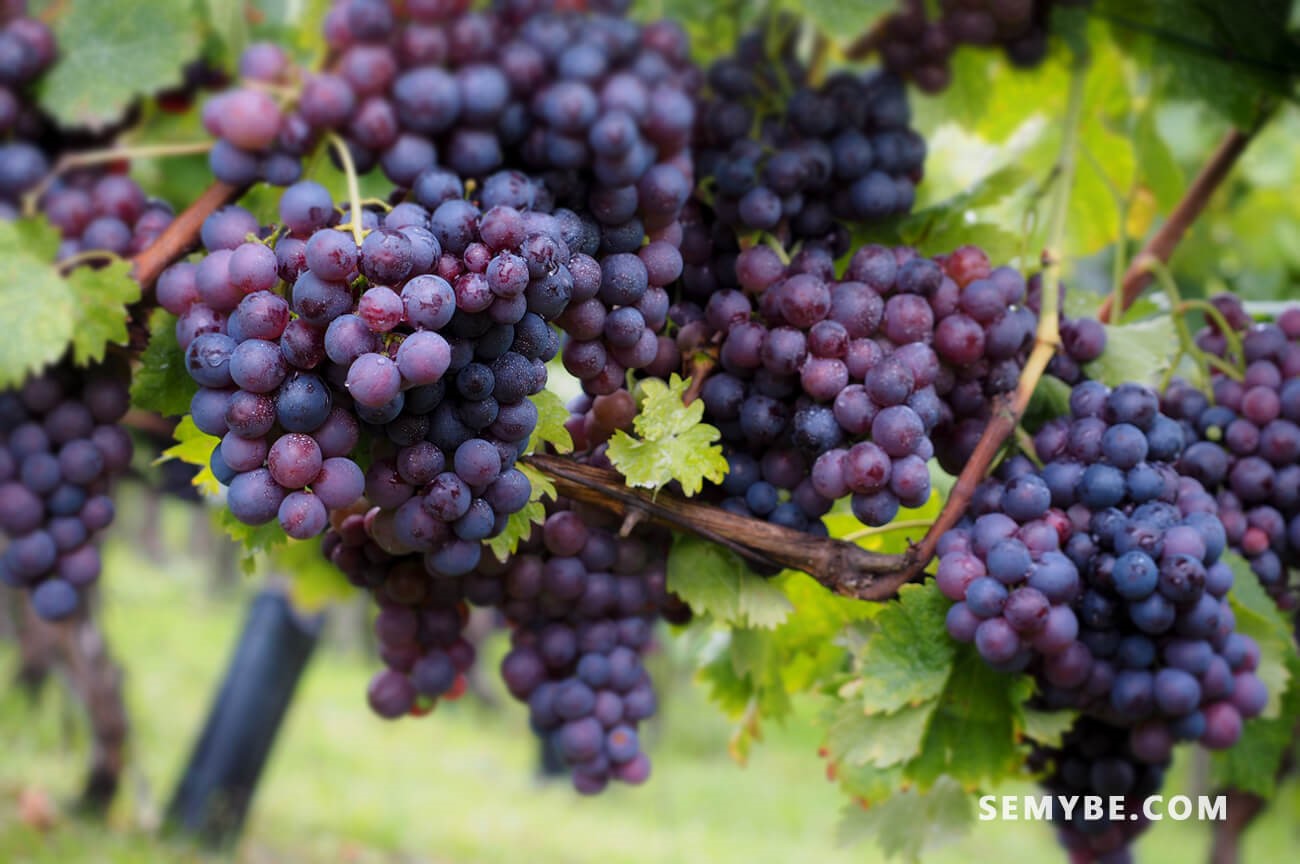
Vitis Vinifera
1. History and use
Red vine is recognized for its ability to treat heavy leg syndrome and other circulatory or venous disorders, such as varicose veins and hemorrhoids, and is very effective in treating migraines and painful menstruation.
2. Description of the plant
The red vine is a shrubby shrub with climbing stems, cultivated in Europe since ancient times, mainly for its fruits, it has been introduced all over the world, its leaves are webbed and its fruit, the Grape, is used to produce wine. A variety of red vine, Vitis vinifera sylvestris, is a rare and protected species, the harvest of which is strictly phytotherapists use the leaves, the fruits (the grapes) as well as the sap and grape seeds. The red vine contains polyphenols (especially resveratrol) and flavonoids (oligo- proanthocyanidines and quercetin), these elements which give it its antioxidant and vasoconstrictor properties.

3. Curative action
- Internal use
Treatment of blood circulation problems (heavy leg syndrome, varicose veins, hemorrhoids) and painful or irregular periods.
- External use
In balm and lotion, the red vine is recommended to fight varicose veins and heavy legs. In decoction and infusion, it regulates venous insufficiency and abundant periods.
- Usual therapeutic indications
Anti-inflammatory and antioedematous: heavy legs, capillary fragility (small vessels under the skin), hemorrhoids, varicose veins, antioxidant action, diuretic properties.
4. Uses
To treat venous insufficiency and varicose veins: take daily, in decoction or infusion, 30 to 50 g of vine leaves extract or 15 to 30 g of seed extract.
The red vine containing astringent tannins (acting especially in the uterus), is not recommended, in high doses, to pregnant women and young children.
In association with other plants (especially witch hazel), its action on blood circulation in general and varicose veins in particular is strengthened (balm with hawthorn, cypress and milk thistle).




